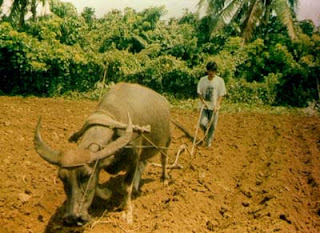Seeds:
Collect ripe fruit and squeeze the seed out in water. Wash the seed thoroughly and dry in the shade. Keep properly dried seeds in a closed container to avoid damage by insects.
Land preparation:
Soil should be well prepared and mixed with cattle, chicken or compost manure at a rate of one bucket per one metre squared. Establish nurseries in flat areas with fertile soils and near to the water sources but not in shaded areas. No tomato, nightshades, Irish potato or sweet peppers should have been planted there the previous year.
Sowing and transplanting:
Sow seeds in rows 15-20 centimetres apart and 1 centimetre between seeds within the row. After sowing, cover the seeds with a thin layer of soil followed by watering. Thin seedlings to 1-2 centimetre spacing. Water regularly to avoid drying. Harden off seedlings by slightly reducing the frequency of watering. Transplant after four to six weeks or when they have 4-7 true leaves.
Management:
The recommended plant spacing for African eggplant is 50 centimetres by 75 centimetres. Weed whenever necessary. Watering during the dry seasons is very important. Adding fertilizer after three harvests improves yields. African Eggplant can be intercropped with other vegetables but avoid tomato, nightshades, Irish potato or sweet peppers.
Harvesting:
Leaves from leafy types can be harvested when the first flowers are about to open. Fruit types should be harvested before the skins get tough and change colour from whitish to pale-yellow. Harvesting should be regular even when there is no ready market to encourage subsequent fruit development.
Pest and diseases:
Pests are flower, stem and fruit borer, leaf miners, nematodes, thrips, aphids and spider mites. Diseases are bacterial wilt, damping off, angular and grey leaf spot, collar rot and fruit rots.
NAMNA YAKUTENGENEZA SABUNI AINA ZOTE
SOMO LA KWANZA : UTENGENEZAJI WA SABUNI ZA AINA ZOTE. MASOMO YATAKAYO FUNDISHWA HAPA NI : 1 1. Utengenezaji Wa Sabuni isiyo na garama. 22. Utengenezaji Wa Sabuni ya urembo. 33. Utengenezaji Wa Sabuni ya asali na cream. 4 4. Utengenezaji Wa Sabuni ya manukato. 5 5. Utengenezaji Wa Sabuni ngumu. 66. Utengenezaji Wa Sabuni ya unga 77. Utengenezaji Wa Sabuni ya kugandisha. 8 8. Utengenezaji Wa Sabuni za dawa. 99. Utengenezaji Wa Sabuni za rangi. 110. Utengenezaji Wa Cream ya kunyolea. 111. Utengenezaji Wa Sabuni iliyotengenezwa na mafuta mengine. VIFAA VYA UTENGENEZAJI SABUNI. *Sufuria. *Bakuli kubwa la mfinyanzi au plastiki. *Mafuta *Maji. *Sodium hydroxide{NaOH} *Ubao mdogo/mw...




Comments
Post a Comment